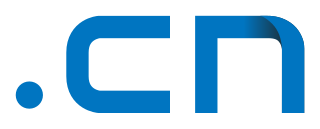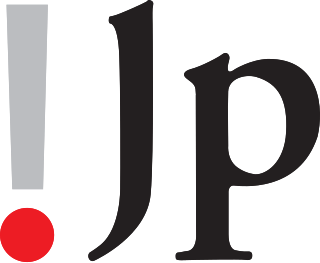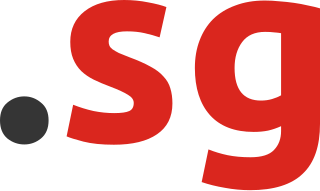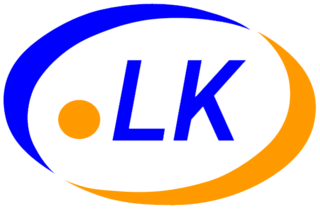Related Research Articles
A domain name registry is a database of all domain names and the associated registrant information in the top level domains of the Domain Name System (DNS) of the Internet that enables third party entities to request administrative control of a domain name. Most registries operate on the top-level and second-level of the DNS.
The domain com is a top-level domain (TLD) in the Domain Name System (DNS) of the Internet. Created in the first group of Internet domains at the beginning of 1985, its name is derived from the word commercial, indicating its original intended purpose for subdomains registered by commercial organizations. Later, the domain opened for general purposes.

The domain name .org is a generic top-level domain (gTLD) of the Domain Name System (DNS) used on the Internet. The name is truncated from 'organization'. It was one of the original domains established in 1985, and has been operated by the Public Interest Registry since 2003. The domain was originally "intended as the miscellaneous TLD for organizations that didn't fit anywhere else." It is commonly used by non-profit organizations, open-source projects, and communities, but is an open domain that can be used by anyone. The number of registered domains in .org has increased from fewer than one million in the 1990s, to ten million in 2012, and held steady between ten and eleven million since then.

.us is the Internet country code top-level domain (ccTLD) for the United States. It was established in early 1985. Registrants of .us domains must be U.S. citizens, residents, or organizations – or foreign entities with a presence in the United States or any territory of the United States. Most registrants in the U.S. have registered for .com, .net, .org and other gTLDs, instead of .us, which has primarily been used by state and local governments, even though private entities may also register .us domains. The domain is managed by Registry Services, LLC, a domain name registry, on behalf of the United States Department of Commerce.

.cn is the country code top-level domain (ccTLD) for the People's Republic of China. Introduced on 28 November 1990, the domain is administered by China Internet Network Information Center, a public institution affiliated with the Ministry of Industry and Information. The domain is the largest ccTLD in the world.
A country code top-level domain (ccTLD) is an Internet top-level domain generally used or reserved for a country, sovereign state, or dependent territory identified with a country code. All ASCII ccTLD identifiers are two letters long, and all two-letter top-level domains are ccTLDs.

.jp is the Internet country code top-level domain (ccTLD) for Japan. It was established in 1986 and is administered by the Japan Registry Services.
.yu was the Internet country code top-level domain (ccTLD) that was assigned to SFR Yugoslavia in 1989 and was mainly used by Serbia and Montenegro and its two successor states. After Montenegro and Serbia acquired separate .me and .rs domains in 2007, a transition period started, and the .yu domain finally expired in 2010.
.sa is the Latin alphabet Internet country code top-level domain (ccTLD) of Saudi Arabia. Domains of this type can be registered through SaudiNIC, a department of the Communications and Information Technology Commission. The Arabic alphabet ccTLD of Saudi Arabia is السعودية.

.il is the Internet country code top-level domain (ccTLD) of Israel, administered by the Israel Internet Association and managed by NIC - ISRAEL, which hosts the DNS root server and manages the Israeli Internet Exchange, that supports IPv4 and IPv6.

.sg is the Internet country code top-level domain (ccTLD) for Singapore. It was first registered in September 1988. It is administered by the Singapore Network Information Centre. Registrations are processed via accredited registrars.
.zm is the Internet country code top-level domain (ccTLD) for Zambia. Registrants of .zm domains must "have a presence in Zambia".

.tr is the Internet country code top-level domain (ccTLD) for Turkey. It is administered by trABİS and managed by the Computer Center DNS Group of the ICT Authority. The domain was formerly administered by NIC.tr and managed by the Turkey Internet Society until September 2022.

.gr is the country code top-level domain (ccTLD) for Greece. Registrations are processed via accredited registrars and domain names in Greek characters may also be registered.

.lk is the Internet country code top-level domain (ccTLD) for Sri Lanka. Foreign companies who do not have a local presence can only reserve their top-level and corresponding open second-level domains. In order to register and use a name they must have a contact address in Sri Lanka.

.tj is the Internet country code top-level domain (ccTLD) for Tajikistan. Registrations are processed via accredited registrars.
Single-letter second-level domains are domains in which the second-level domain of the domain name consists of only one letter, such as x.com. In 1993, the Internet Assigned Numbers Authority (IANA) explicitly reserved all single-letter and single-digit second-level domains under the top-level domains com, net, and org, and grandfathered those that had already been assigned. In December 2005, ICANN considered auctioning these domain names.

.rs is the Internet country code top-level domain (ccTLD) for Serbia. The domain name registry that operates it is the Serbian National Internet Domain Registry (RNIDS). The letters rs stand for Republika Srbija/Република Србија.
.ss is the designated country code top-level domain (ccTLD) for South Sudan in the Domain Name System of the Internet. It is derived from the ISO 3166-1 alpha-2 code for South Sudan, which is SS. According to CIO East Africa, the TLD was allocated on 10 August 2011 following the country's declaration of independence from Sudan. The TLD was registered on 31 August 2011, but not added to the DNS root zone and was thus not operational. It was approved at the ICANN Board meeting on 27 January 2019 and was added to the DNS root zone on 2 February 2019.

.bank is a sponsored top-level domain used in the Domain Name System of the internet. The TLD was officially delegated to fTLD Registry Services on behalf of the Financial Services Roundtable and American Bankers Association on January 5, 2015.
References
- ↑ "Useful information about .or.at domains" . Retrieved 29 October 2014.
- ↑ "Domain registration" . Retrieved 29 October 2014.
- ↑ "Principles and Grants" . Retrieved 29 October 2014.
- ↑ "Sector-based .fr domains" . Retrieved 31 October 2014.
- ↑ "Overview" . Retrieved 29 October 2014.
- ↑ "Who could register which domain name?" . Retrieved 17 May 2024.
- ↑ "Can an individual or a company in abroad register a ".tr" domain name?" . Retrieved 17 May 2024.
- 1 2 "Who could register which domain name?" . Retrieved 17 May 2024.
- ↑ "the australian second level domain name system" . Retrieved 31 October 2014.
- ↑ "General Registration Rules, Version 3.21, February 5, 2015" (PDF). Archived from the original (PDF) on 2017-12-01. Retrieved 18 November 2017.
- ↑ "Useful information about .fr domains" . Retrieved 31 October 2014.
- ↑ "ICANN-Registrar: French Domains with Accents" . Retrieved 31 October 2014.
- ↑ "Commercial, national & international character with a .co.nl domain name" . Retrieved 25 January 2016.
- ↑ ".Co.NL WhoIS" . Retrieved 25 January 2016.
- ↑ ".RS - Republic of Serbia .ME - Republic of Montenegro (Former parts of Yugoslavia) Formerly .YU and .CS Country Codes" . Retrieved 31 October 2014.
- ↑ "Delegated strings" . Retrieved 29 October 2014.
- ↑ Easton, Catherine R. (2012). "ICANN's core principles and the expansion of generic top-level domain names". International Journal of Law and Information Technology. 20 (4): 273–290. doi:10.1093/ijlit/eas013.
- ↑ Mackey, TK; Liang, BA; Kohler, JC; Attaran, A (5 March 2014). "Health Domains for Sale: The Need for Global Health Internet Governance". J Med Internet Res. 16 (3): e62. doi: 10.2196/jmir.3276 . PMC 3961808 . PMID 24598602.